Related Research Articles
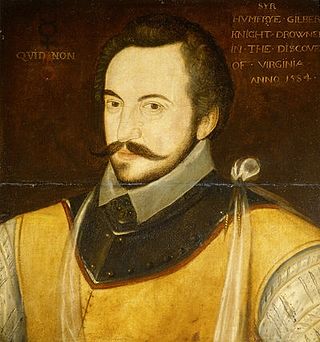
Sir Humphrey Gilbert was an English adventurer, explorer, member of parliament and soldier who served during the reign of Queen Elizabeth I and was a pioneer of the English colonial empire in North America and the Plantations of Ireland. He was a maternal half-brother of Sir Walter Raleigh and a cousin of Sir Richard Grenville.

Newport Cathedral, also known as St Gwynllyw's or St Woolos' Cathedral, is the cathedral of the Diocese of Monmouth within the Church in Wales, and the seat of the Bishop of Monmouth. Its official title is Newport Cathedral of St Woolos, King and Confessor. The name of the saint, Woolos, is an anglicisation of the Welsh name Gwynllyw.

Events from the year 1949 in Canada.
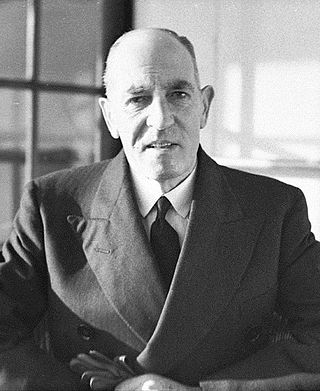
Admiral Sir David Murray Anderson, was a British naval officer and governor. Anderson served in the Royal Navy from the age of 13 and served in many colonial wars and was given various Empire postings, rising to the rank of admiral in 1931. He retired a year later and took up the posting as Governor of Newfoundland, where he also took up the role of Chairman of the Government following the suspension of self-government in the Dominion of Newfoundland. Leaving Newfoundland in 1935, he was appointed as Governor of New South Wales but served only briefly due to his ill health. He died while in office aged 62.

The Buccaneer is a 1958 pirate-war film made by Paramount Pictures starring Yul Brynner as Jean Lafitte, Charles Boyer and Claire Bloom. Charlton Heston played a supporting role as Andrew Jackson, the second time that Heston played Jackson, having portrayed him earlier in the 1953 film The President's Lady. The film was shot in Technicolor and VistaVision, the story takes place during the War of 1812, telling a heavily fictionalized version of how the privateer Lafitte helped in the Battle of New Orleans and how he had to choose between fighting for America or for the side most likely to win, the United Kingdom.

Sir Walter Edward Davidson, was a British colonial administrator and diplomat. He served periods as Governor of the Seychelles, Governor of Newfoundland and as Governor of New South Wales, where he died in office.

The Loyal Orange Association in Canada, historically the Loyal Orange Association in British America and also known as the Loyal Orange Association of Canada, Grand Orange Lodge of Canada, or simply Orange Order in Canada, is the Canadian branch of the Orange Order, a Protestant fraternal organization that began in County Armagh in Ireland in 1795. It has played a large part in the history of Canada, with many prominent members including four prime ministers, among them Sir John A. Macdonald and John Diefenbaker.

By the arrangements of the Canadian federation, the Canadian monarchy operates in Newfoundland and Labrador as the core of the province's Westminster-style parliamentary democracy. As such, the Crown within Newfoundland and Labrador's jurisdiction is referred to as the Crown in Right of Newfoundland and Labrador, His Majesty in Right of Newfoundland and Labrador, or the King in Right of Newfoundland and Labrador. The Constitution Act, 1867, however, leaves many royal duties in the province specifically assigned to the sovereign's viceroy, the lieutenant governor of Newfoundland and Labrador, whose direct participation in governance is limited by the conventional stipulations of constitutional monarchy.

The province of Newfoundland and Labrador covers the period from habitation by Archaic peoples thousands of years ago to the present day.
Laurens Prins, anglicized as Lawrence Prince, was a 17th-century Dutch buccaneer, privateer and an officer under Captain Sir Henry Morgan. He and Major John Morris led one of the columns that raided Panama in 1671.
Sir Michael Geare was a 16th-century English sailor, privateer and merchant. One of the many Sea Dogs who plagued the Spanish Empire during the Elizabethan age, Geare was well known to the Spaniards of the West Indies and the Spanish Main as commander of the Little John. He remained one of the most active in the region throughout the 1590s and up until his retirement in 1603.
John Nutt was an English pirate. He was one of the more notorious brigands of his time, raiding the coast of southern Canada and western England for over three years before his capture by Sir John Eliot in 1623. His arrest and conviction caused a scandal in the English court, after Nutt paid Eliot £500 in exchange for a pardon, and was eventually released by Secretary of State George Calvert.
John "Jack" Charles Jenkins was a Welsh international rugby union forward who played club rugby for Newport and London Welsh. He won just a single cap for Wales in 1907 but faced both New Zealand and South Africa at county level with Middlesex and Monmouthshire.

The English overseas possessions comprised a variety of overseas territories that were colonised, conquered, or otherwise acquired by the Kingdom of England before 1707.
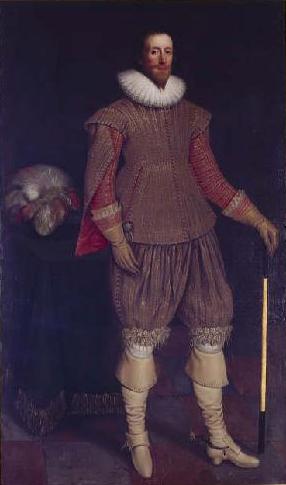
Sir Francis Verney was an English adventurer, soldier of fortune, and pirate. A nobleman by birth, he left England after the House of Commons sided with his stepmother in a legal dispute over his inheritance, and became a mercenary in Morocco and later a Barbary corsair.
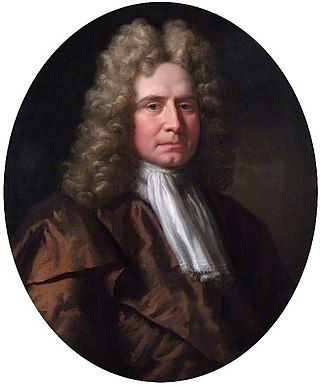
Humphry Morice was an English merchant, politician and slave trader who served as the governor of the Bank of England. He inherited his father's trading business around the age of eighteen, and learned finance and speculation from an uncle. Placed in Parliament through a cousin's interest in 1713, his Whig politics ultimately provoked a breach with his Tory cousin, and he had to be given another seat in 1722 by Robert Walpole's administration. He rose to be Deputy Governor and then Governor of the Bank of England in 1727, but unknown to his contemporaries, his fortune was largely fictitious and he was embezzling from the Bank and his daughters' trust fund. He died suddenly in 1731, perhaps having poisoned himself to forestall the discovery of his frauds, and left behind enormous debts.

The Newfoundland Expedition also known as Bernard Drake's Newfoundland Expedition was an English naval expedition that took place during the beginning of the declared Anglo-Spanish War in the North Atlantic during summer and autumn of 1585. The area of conflict was situated mainly in an area known as the Grand Banks off present day Newfoundland. The aim of the expedition was to capture the Spanish and Portuguese fishing fleets. The expedition was a huge military and financial success and virtually removed the Spanish and Portuguese from these waters. In addition the raid had large consequences in terms of English colonial expansion and settlement.
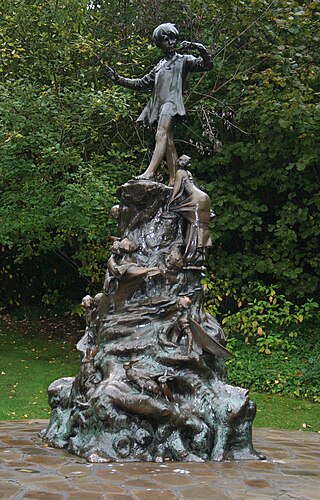
The statue of Peter Pan is a 1912 bronze sculpture of J. M. Barrie's character Peter Pan. It was commissioned by Barrie and made by Sir George Frampton. The original statue is displayed in Kensington Gardens in London, to the west of The Long Water, close to Barrie's former home on Bayswater Road. Barrie's stories were inspired in part by the gardens: the statue is at the place where Peter Pan lands in Barrie's 1902 book The Little White Bird after flying out of his nursery. Six other casts made by Frampton have been erected in other places around the world.
Anthony Parkhurst was an English explorer and promoter of English colonisation of North America in the 1570s and 1580s. He is best known for his early engagement in the English fishery off Newfoundland and his exploration of the island and its resources.
References
- ↑ Sanders, Richard. If a Pirate I Must Be...: The True Story of Black Bart, King of the Caribbean Pirates. New York: Skyhorse Publishing, 2007. (pg. 19) ISBN 1-60239-019-3
- ↑ Fuller, Basil and Ronald Leslie-Melville. Pirate Harbours and Their Secrets. London: Stanley Paul, 1935. (pg. 161-162)
- ↑ Leslie, Edward E. Desperate Journeys, Abandoned Souls: True Stories of Castaways and Other Survivors. New York: Houghton Mifflin, 1998. (pg. 90) ISBN 0-395-91150-8
- ↑ History of St. Gwynllyw' Church, Newport-on-Usk: Together with Some Historical Notes of the Immediate Neighbourhood. Newport: Robert H. Johns, 1893. (pg. 59)
